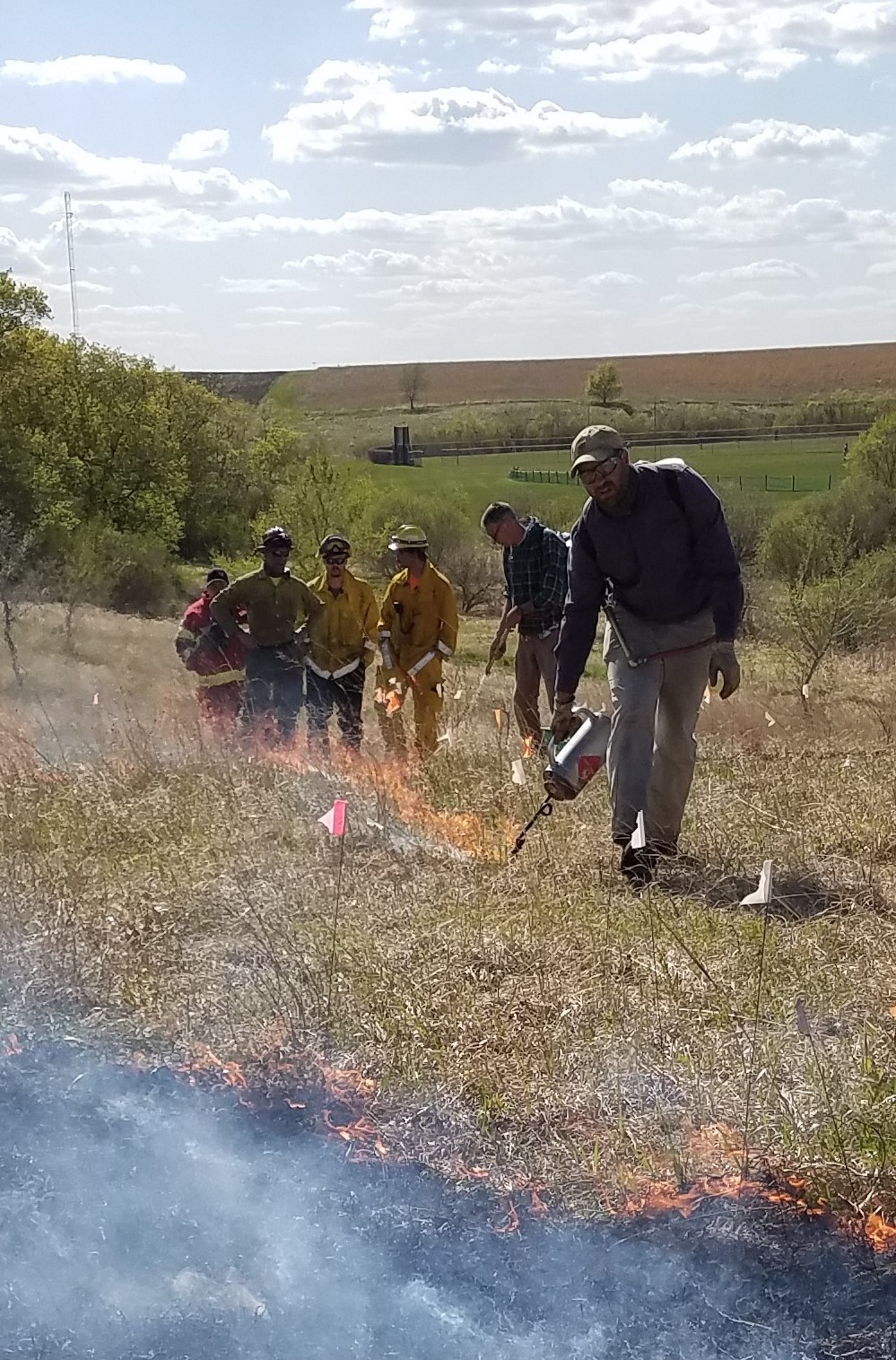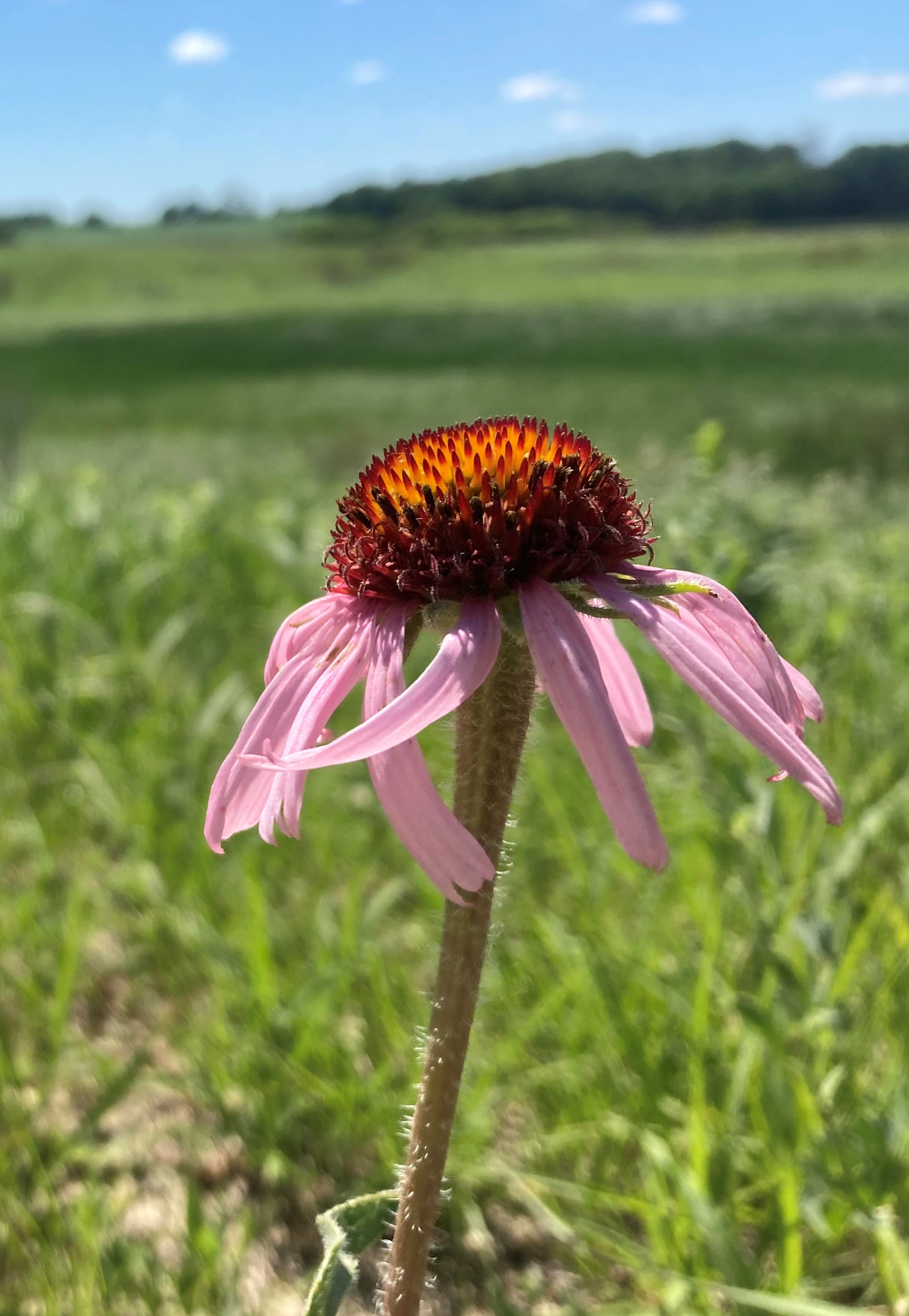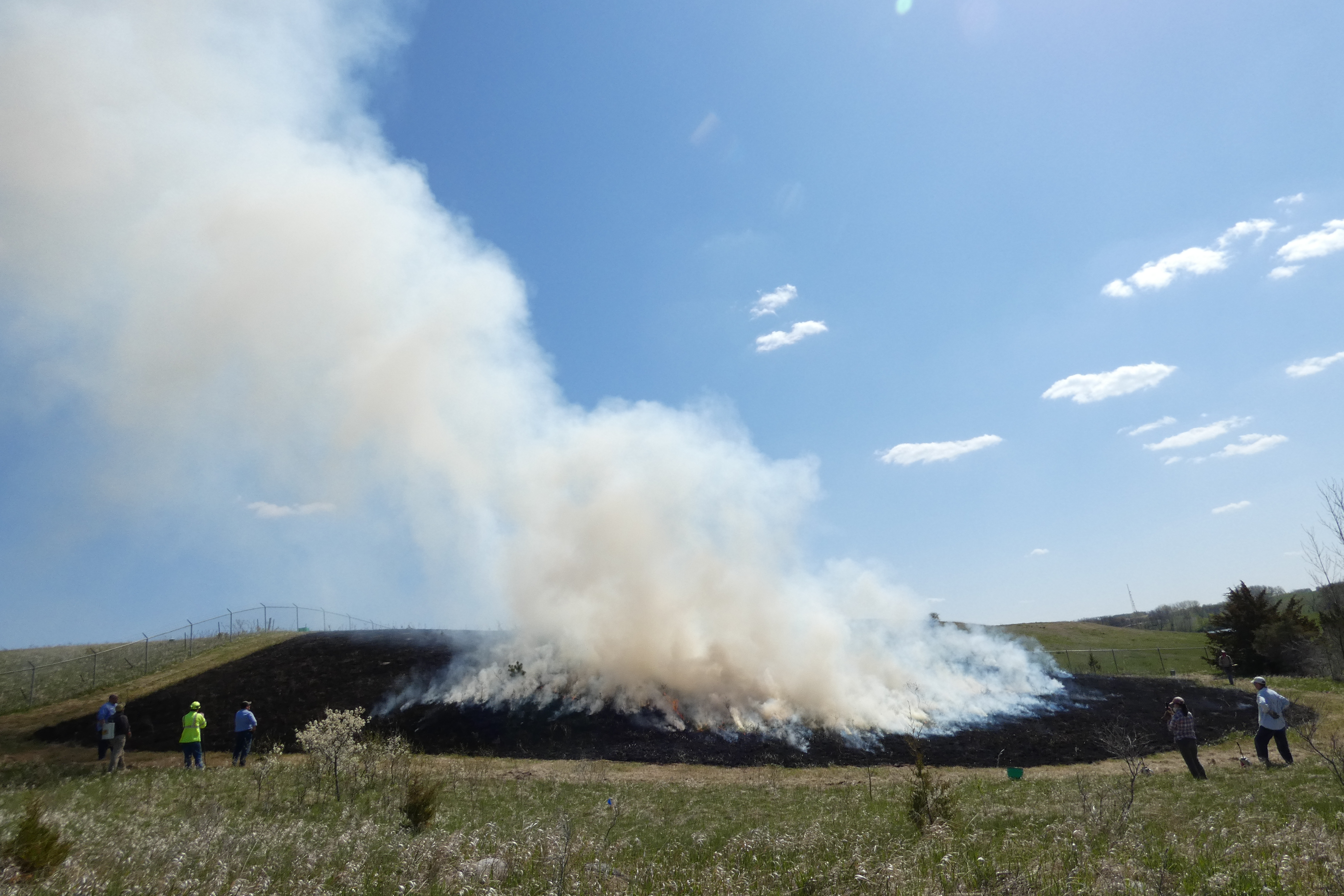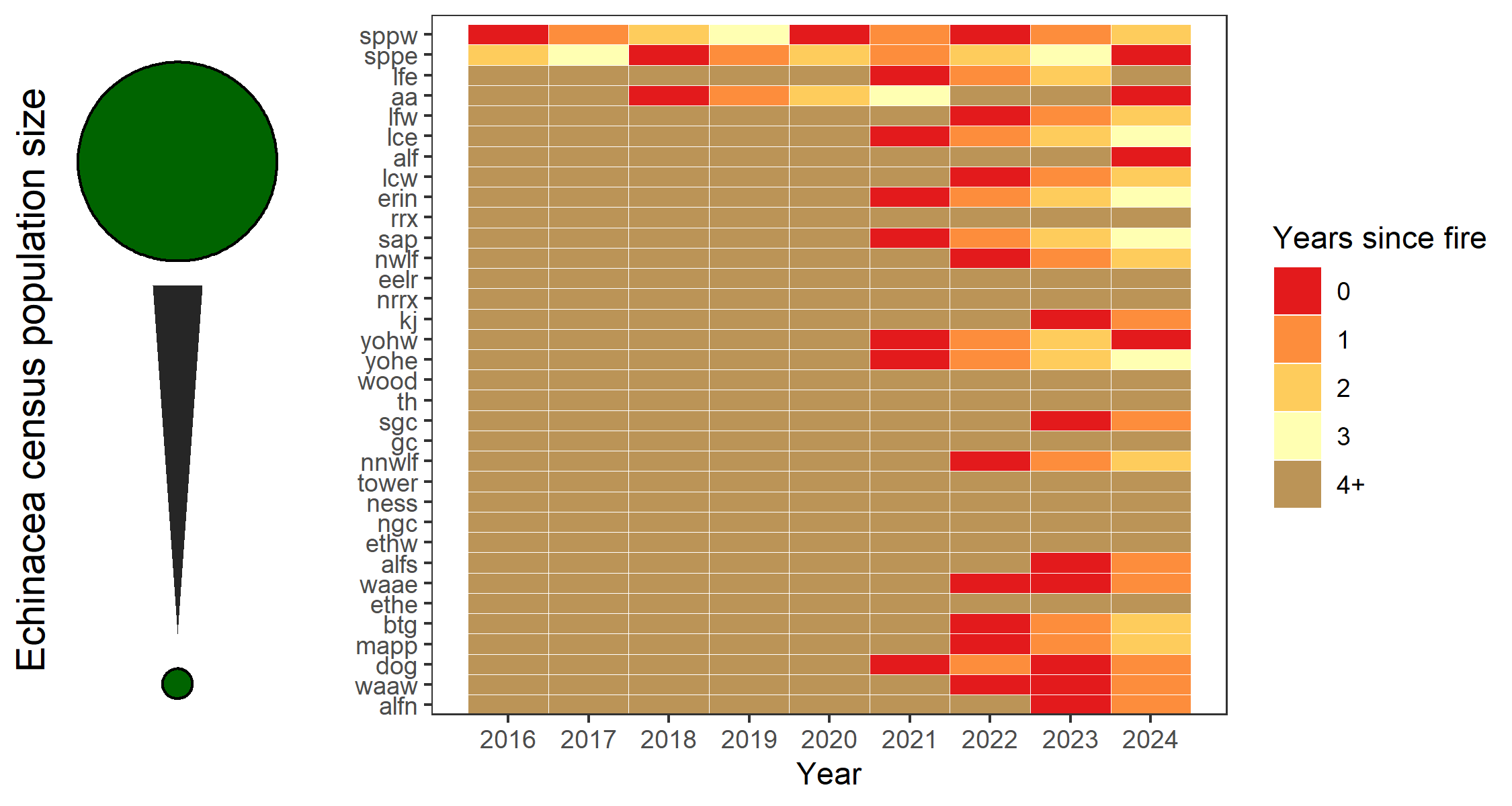Fire effects on plant reproduction and population dynamics in remnant prairies
 I am currently a Postdoctoral Research Scientist at the Chicago Botanic Garden studying how fire influences plant reproduction and population dynamics in remnant prairies. For this research, I am collaborating Dr. Stuart Wagenius and the Echinacea Project to build on our previous work illustrating how fire synchronizes flowering and promotes successful reproduction in the pale-leaved purple coneflower (Echinacea angustifolia).
I am currently a Postdoctoral Research Scientist at the Chicago Botanic Garden studying how fire influences plant reproduction and population dynamics in remnant prairies. For this research, I am collaborating Dr. Stuart Wagenius and the Echinacea Project to build on our previous work illustrating how fire synchronizes flowering and promotes successful reproduction in the pale-leaved purple coneflower (Echinacea angustifolia).
Here is a video describing this research project made by Alex W., a middle school teacher and RET with the Echinacea Project.
Fire promotes successful reproduction in Echinacea angusitifolia, a widespread but declining plant species
 In collaboration with members of the Echinacea Project, I investigated the effects of fire on plant reproduction and population dynamics in fragmented prairies. Less than 1 percent of the once expansive tallgrass prairie remains in the upper Midwest. Most of these remnant prairies are small, isolated, losing plant species at an alarming rate (more than 1 species per year). Fire helps maintain plant diversity in these remnant prairies but its beneficial effects are not fully understood. To examine how fire affects plant reproduction and population dynamics, we monitored reproduction nearly 800 Echinacea angustifolia plants over a 21-year period (1996-2016). Prescribed fires stimulated flowering and synchronized reproduction in an Echinacea population where limited mating opportunities reduce pollination efficiency and seed production. The increase in mating opportunities after fire improved pollination and seed production. Given that many species flower in response to fire, we predict fire helps maintain plant diversity in prairies (and other fire-dependent ecosystems) not only by preventing competitive exclusion but also by enhancing seed production and promoting population growth.
In collaboration with members of the Echinacea Project, I investigated the effects of fire on plant reproduction and population dynamics in fragmented prairies. Less than 1 percent of the once expansive tallgrass prairie remains in the upper Midwest. Most of these remnant prairies are small, isolated, losing plant species at an alarming rate (more than 1 species per year). Fire helps maintain plant diversity in these remnant prairies but its beneficial effects are not fully understood. To examine how fire affects plant reproduction and population dynamics, we monitored reproduction nearly 800 Echinacea angustifolia plants over a 21-year period (1996-2016). Prescribed fires stimulated flowering and synchronized reproduction in an Echinacea population where limited mating opportunities reduce pollination efficiency and seed production. The increase in mating opportunities after fire improved pollination and seed production. Given that many species flower in response to fire, we predict fire helps maintain plant diversity in prairies (and other fire-dependent ecosystems) not only by preventing competitive exclusion but also by enhancing seed production and promoting population growth.
Here is a video describing our research as well as popular press articles in The New York Times and Popular Science!
How does fire influence plant population growth and persistence in remnant prairies?


How does fire influence plant reproductive outcomes in fragmented prairies?

In addition to the detailed demographic data described above, we are quantifying the density-dependent effects on reproduction in five prairie prairie species: Narrow-leaved purple coneflower (Echinacea angustifolia), Rough blazing star (Liatris aspera), Big bluestem (Andropogon gerardii), Green milkweed (Asclepias viridiflora), and Western red lily (Lilium philadelphicum).